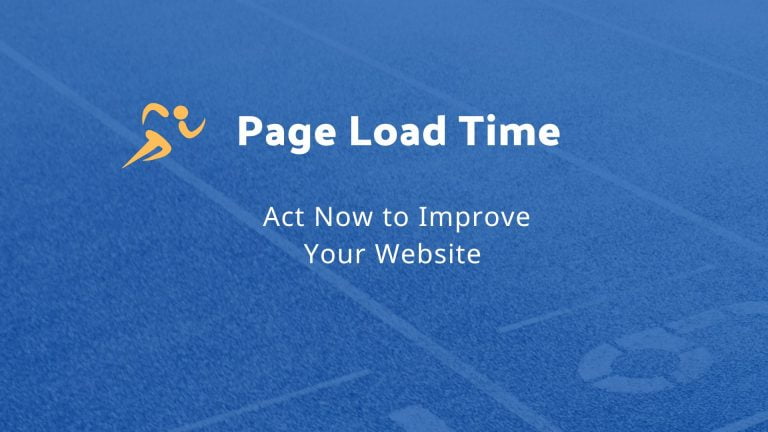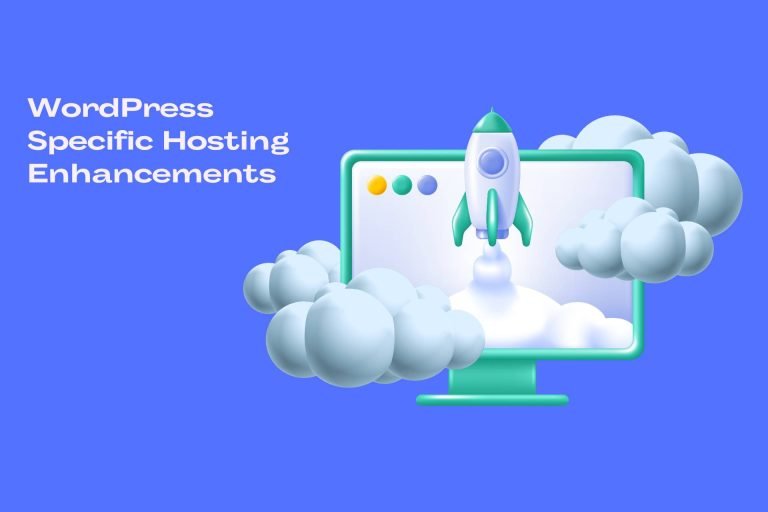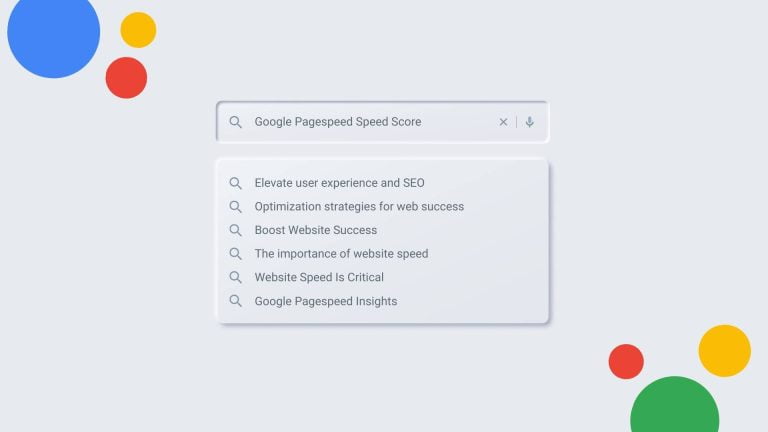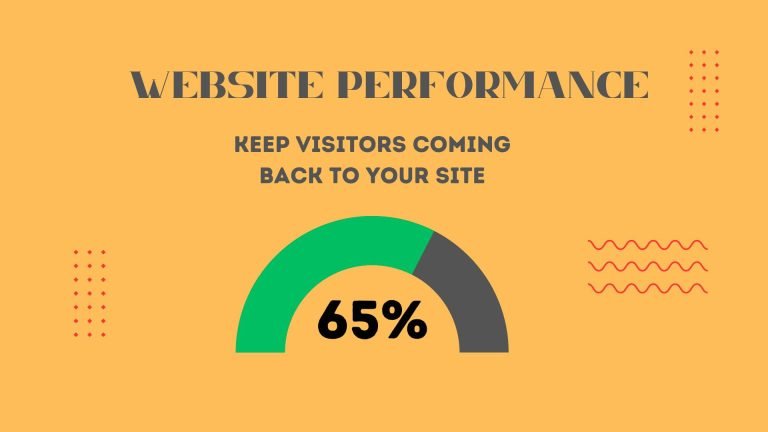In today’s competitive online world, continuously monitoring website speed and iterative speed optimization tactics are critical for keeping a high-performing website. With user expectations growing and attention spans shortening, a sluggish or poorly optimized website may lead to lost visits, lower engagement, and, ultimately, a negative influence on company performance.
What is the value of continuously monitoring Website Speed?
The value of continuous monitoring is in the capacity to detect and fix performance issues early on. Businesses can immediately spot bottlenecks, slow-loading pages, and other issues that may impede the user experience by frequently monitoring website speed and performance indicators. This enables timely intervention and optimization, resulting in a smooth and seamless browsing experience for visitors. Furthermore, continual monitoring allows organizations to get ahead of possible problems, lowering the chance of extended downtime and consumer unhappiness.
Iterative speed optimization tactics are also essential for keeping a high-performing website. These tactics entail optimizing several components of the site, including coding, picture compression, browser caching, and file minification. Businesses may improve page load speeds, website responsiveness, and user experience by using these optimization approaches and continually assessing their impact. Furthermore, search engines like Google use website speed as the ranking criterion, so faster-loading sites are more likely to show higher search results. Businesses may keep their present audience while also attracting new visitors through enhanced search engine presence by investing in iterative speed optimization.
Continuous monitoring and iterative speed adjustment are required to keep a high-performing website running smoothly. Businesses can create a smooth user experience, minimize bounce rates, and ultimately achieve better business outcomes by proactively recognizing and fixing performance issues. With an increased emphasis on website performance and user experience, investing in these tactics is critical for long-term online success.
How user expectations and technology evolve, necessitating Monitoring Website Speed and constant speed optimization initiatives
User expectations and technology are always changing, and this dynamic environment needs continuing website performance optimization work. Users have grown accustomed to instant gratification and expect websites to load quickly and deliver a flawless surfing experience as technology progresses and internet connections increase. A slow-loading website can irritate users, resulting in increased bounce rates, less engagement, and, eventually, the loss of potential clients.
Businesses must emphasize continuing performance optimization to satisfy these changing user expectations. New devices, browsers, and platforms arise as technology advances, each with its own set of performance needs. Regular speed optimization efforts guarantee that websites are optimized for quick load times and optimal performance across various devices and platforms. Businesses can create a flawless customer experience and stay ahead of the competition by staying up to date on the newest trends and innovations.
Furthermore, search engines like Google are constantly updating their algorithms to optimize user experience, with website performance playing an important role in deciding search ranks. Businesses must regularly optimize their websites’ performance to retain or improve their search engine presence, as search engines place more importance on speed. Continuous speed optimization initiatives, such as regular monitoring, testing, and fine-tuning, enable businesses to react to new technology and user expectations, ensuring that their website remains competitive in an ever-changing digital landscape.
To summarize, the changing nature of consumer expectations and technology needs constant website performance optimization work. Businesses can exceed consumer expectations, deliver a flawless browsing experience, and keep their competitive edge in the digital sphere by prioritizing constant speed optimization. Regular optimization ensures that websites run rapidly across a wide range of devices and platforms, which improves user engagement, search engine rankings, and, ultimately, business success.
The long-term advantages of constant monitoring and optimization for user experience, search engine rankings, and company success
Consistent website performance monitoring and optimization provide a variety of long-term benefits that have a substantial impact on user experience, search engine rankings, and overall business success. The following are the primary benefits of implementing a strategy centered on ongoing speed optimization:
Improved User Experience
- Faster loading speeds offer a smooth and enjoyable browsing experience.
- Quick page loading boosts user engagement, lowers bounce rates, and boosts conversions.
- Customers are more satisfied and loyal when they can navigate easily and quickly.
Improved Search Engine Positioning
- Search engines prefer websites that load quickly and score higher in search results.
- Improved rankings boost visibility, organic traffic, and the possibility of reaching a wider audience.
- Increased search engine visibility increases brand exposure and credibility.
Enhanced Business Success
- A high-performing website with quick loading times fosters client trust and credibility.
- Positive user experiences result in increased client retention and return visits.
- Increased conversions and sales contribute to the growth and profitability of a business.
Businesses may unlock these long-term benefits by regularly monitoring and optimizing website speed, which will have a favorable impact on their overall online visibility and success. Remember that a fast-loading website not only pleases users but also gives you a competitive advantage in the digital arena.
The Importance of Constant Monitoring
Continuous monitoring is critical for discovering performance issues and trends, allowing businesses to manage and enhance their website’s speed in advance. The following are the main reasons why continuous monitoring is critical:
Insights into Real-Time Performance
- Continuous monitoring gives real-time statistics on website speed, allowing businesses to stay up to date on the performance of their website at all times.
- Instant alerts and notifications aid in the detection of any sudden increases or decreases in speed, allowing for fast examination and resolution.
- Detailed performance indicators provide useful insights into areas that need to be improved, allowing firms to focus their optimization efforts.
Identifying Problems with Performance
- Businesses can use continuous monitoring to identify and resolve particular performance issues that affect website speed, such as huge file sizes, inefficient coding, or server bottlenecks.
- Continuous monitoring aids in the identification of performance bottlenecks, allowing firms to take corrective action as soon as possible.
- Businesses may provide a constantly optimal online experience for their users by proactively identifying and resolving performance issues.
Monitoring Performance Trends
- Businesses can use continuous monitoring to examine performance trends over time, allowing them to detect long-term patterns and make data-driven decisions.
- Businesses can spot seasonal fluctuations, developing trends, and the impact of optimization efforts by studying historical data.
- Tracking performance trends allows firms to assess the efficacy of their optimization efforts and make informed decisions about future improvements.
Businesses may keep ahead of performance concerns, optimize their website speed, and ensure a flawless user experience by employing continuous monitoring strategies. It gives firms significant insights into performance trends and enables them to make data-driven decisions for continuing optimization efforts.
The various tools and techniques available for monitoring website speed and performance
Website speed and performance monitoring are critical for keeping a high-performing website. Here are some critical tools and approaches that organizations may use to efficiently monitor the speed and functionality of their website:
Website Speed Testing Software
- Online speed-testing tools such as Google PageSpeed information, GTmetrix, and Pingdom provide useful information about a website’s performance.
- These tools assess several aspects of website speed, such as page load time, file size, and server response time.
- They offer extensive reports with actionable recommendations to improve the performance of websites.
Tools for Real-Time Monitoring
- Tools like New Relic and Datadog provide extensive monitoring solutions for measuring website performance.
- Key performance indicators such as page load times, server response times, and database performance are monitored by these tools.
- They provide real-time alerts and notifications to help businesses identify performance issues and take fast action.
Content Delivery Networks (CDNs)
- Cloudflare and Akamai CDNs help enhance website performance by spreading content across several servers across the world.
- They reduce latency by serving content from the closest server to the user’s location.
- CDNs also offer optimization services such as caching, compression, and image optimization.
Performance Analytics and A/B Testing
- A/B testing tools such as Optimizely and Google Optimize enable organizations to experiment with various website features to improve performance.
- Google Analytics and other performance analytics tools can provide significant insights into website speed and user behavior.
- These tools allow firms to assess the effectiveness of their optimization efforts and make data-driven decisions.
Businesses may successfully monitor the speed and functionality of their website by utilizing these tools and strategies. Regular monitoring assists in identifying areas for improvement, optimizing website speed, and providing a consistent user experience.
The benefits of proactive monitoring in terms of early detection, timely troubleshooting, and minimizing potential downtime
Proactive monitoring is critical for ensuring a website’s best functionality. Businesses can reap various benefits from proactive monitoring tactics, including early identification, prompt troubleshooting, and reduced potential downtime. Here are some significant benefits:
Detecting Performance Issues Early
- Regular monitoring enables firms to spot performance issues early on, even before they have an impact on the user experience.
- Monitoring tools provide real-time insights into a variety of performance measures, including page load times, server response times, and error rates.
- Businesses can take prompt action to remedy issues and prevent future degradation of website performance by detecting them early on.
Troubleshooting and problem resolution on time
- Businesses may quickly uncover the fundamental causes of performance issues using proactive monitoring.
- Businesses may immediately respond to any irregularities in website performance by using real-time alerts and notifications.
- IT personnel can troubleshoot and resolve issues more efficiently by having the essential information on hand, minimizing the impact on users, and preventing protracted downtime.
Potential Downtime is Reduced
- By regularly monitoring website performance and identifying potential issues, proactive monitoring helps to prevent unexpected downtime.
- Businesses may reduce the risk of downtime and maintain a seamless user experience by addressing performance bottlenecks and resolving issues in a timely way.
- The capacity to detect and handle issues before they escalate contributes to the website’s availability and reliability.
In essence, proactive monitoring provides businesses with the benefits of early identification, fast troubleshooting, and reduced potential downtime. Businesses may assure optimal website performance, improve user experience, and preserve their online reputation by installing comprehensive monitoring systems and exploiting real-time analytics.
Key Metrics and Performance Evaluation
There are several key metrics and benchmarks for measuring website speed and performance that provide valuable insights into the overall user experience. Understanding these metrics is critical for optimizing the performance of your website. Consider the following key metrics and benchmarks:
Time to load a page
- One of the most important metrics for measuring website speed is page load time. It is the amount of time required for a web page to fully load and display its content.
- Slow page load times can increase bounce rates and decrease user satisfaction. Aim for a page load time of less than 3 seconds for the best user experience.
TTFB (Time to First Byte)
- The time it takes for the first byte of data to be received by the user’s browser after requesting the server is measured by TTFB.
- A fast TTFB indicates that the server is responsive and that the backend processing is efficient. For optimal performance, aim for a TTFB of less than 200 milliseconds.
Rendering Time
- Render start time is the amount of time it takes for the browser to begin rendering the content of a web page.
- A faster render start time allows users to see and interact with the page more quickly, improving the overall user experience.
Resource optimization and the page size
- The size of your website, including all of its scripts, graphics, and other resources, can have a big impact on how quickly it loads.
- Reduce the number of requests made to the server by optimizing your page size by reducing the size of pictures, scripts, and stylesheets, as well as using browser caching.
You can increase your website’s speed and performance, which will increase user satisfaction, decrease bounce rates, and improve search engine rankings by tracking and optimizing these crucial metrics. Continually comparing these metrics to industry norms and best practices can help you spot areas for development and make sure your website provides users with a first-rate experience.
How to interpret and analyze performance data to identify bottlenecks and areas for improvement
Interpreting and analyzing performance data is critical for finding bottlenecks and areas for improvement in your website’s speed and performance. You may optimize your website by learning how to examine this data. Here are some procedures to assist you in comprehending and analyze performance data:
Gather Relevant Performance Data
- Collect performance statistics for your website using tools like Google Analytics, PageSpeed Insights, or third-party monitoring tools.
- Pay attention to metrics such as page load time, TTFB, render start time, and other critical performance indicators.
Recognize Performance Trends and Patterns
- Examine your performance data for patterns and trends to find reoccurring difficulties or places for improvement.
- Keep an eye out for differences in performance across various pages, devices, and geographical areas.
Identify and prioritize areas for improvement
- Analyze your data to determine which areas require immediate attention.
- Identify and fix bottlenecks, such as slow-loading scripts, big file sizes, or excessive server queries.
Use A/B testing and experimentation.
- To evaluate alternative tactics and optimizations, do A/B testing and experimentation.
- Measure the impact of various solutions, such as caching strategies, image optimization, or content delivery networks, on performance.
Iterate and monitor continuously.
- Monitor and track performance statistics regularly to determine the impact of your improvements.
- Based on the insights gathered from your data analysis, make incremental changes.
You may successfully discover bottlenecks and opportunities for improvement on your website by following these steps and utilizing performance data. This data-driven strategy enables you to make educated decisions to improve the performance of your website and provide an amazing customer experience.
Strategies for Iterative Speed Optimization
Iterative optimization is based on a continual improvement attitude and the tireless quest to improve the entire user experience. It is a continuous process of testing, assessing, and applying changes to improve many parts of a website. Here is an overview of the importance of iterative optimization and its influence on user experience:
Mindset for Continuous Improvement
- Iterative optimization is based on the notion that a website is never completely “finished” but rather always evolves and improves.
- You realize the need to be proactive and adapt to changing user expectations and industry trends by adopting a continuous improvement approach.
- This method emphasizes constant monitoring, analysis, and optimization to find and solve any flaws in your website’s performance and user experience.
- You are committing to iterative optimization when you use it.
Improved User Experience
- By fine-tuning many factors that contribute to user pleasure and engagement, iterative optimization has a direct influence on the user experience.
- It enables you to collect useful data, user comments, and insights to better understand user behavior and preferences.
- You can detect and fix pain areas, streamline navigation, increase content relevancy, and create a more intuitive and smooth user journey by continually optimizing your website.
- Iterative optimization keeps your website in sync with user demands and expectations, encouraging good interactions and boosting the possibility of conversions and long-term client loyalty.
Adopting an iterative optimization method not only showcases your dedication to quality but also allows you to develop a website that changes in real time to suit the ever-changing needs of your consumers. You can boost engagement, increase conversions, and ultimately accomplish your business goals by adopting continuous improvement and optimizing the user experience.
Implementing a Workflow for Speed Optimization
Creating an efficient speed optimization procedure is critical for guaranteeing optimal website performance and offering a consistent user experience. Here’s a step-by-step method for creating a simplified performance optimization workflow:
Examine Current Performance
- Begin by assessing the existing performance of your website using speed-testing tools and analytics. Identify problem areas, such as slow-loading websites, big file sizes, or long server response times.
- Analyze user behavior analytics and comments to acquire insights into particular pain spots and places where performance improvements may have the most impact.
Identify Opportunities for Optimization
- Perform a thorough audit of your website’s elements, such as graphics, scripts, plugins, and code. Look for ways to increase performance by optimizing these aspects.
- Tasks should be prioritized based on their prospective effect and practicality. This may include compressing and resizing pictures, minifying CSS and JavaScript scripts, and utilizing browser caching mechanisms.
- Consider using content delivery networks (CDNs) to spread website content over numerous servers around the world, decreasing the burden on your origin server and improving response times for users all around the world.
You may create an efficient speed optimization strategy by following this step-by-step method, which will allow you to discover performance bottlenecks, execute targeted improvements, and consistently enhance the speed and user experience of your website. Regular monitoring and fine-tuning of your speed optimization efforts can assist you in maintaining optimal performance and staying ahead of the competition in today’s fast-paced digital scene.
Team members’ roles and duties in the optimization process
Various essential team members play critical roles in guaranteeing a successful optimization process when it comes to website optimization. The following is a breakdown of each team member’s tasks and responsibilities:
Web Developers or a Website Speed Optimization Service
- The web developers or a Website Speed Optimization Service are in charge of developing technological adjustments to improve the speed of the website. This involves optimizing code, decreasing HTTP requests, and using appropriate caching mechanisms.
- They work with the design and content teams to ensure that the website is optimized for speed without sacrificing the site’s aesthetic attractiveness or usefulness.
SEO Experts
- The SEO professional is responsible for optimizing the website’s performance for search engines. They undertake keyword research, optimize metadata, and ensure correct indexing and crawlability.
- They also analyze performance data, identify areas for improvement, and collaborate with the web developer and content team to apply SEO best practices that increase website speed and visibility in search engine rankings.
Content Creators
- The content team is critical in maximizing website performance. They optimize information such as photographs and movies by compressing files and using appropriate formats. They also guarantee that content is structured and ordered to enhance page load times.
- They interact with the SEO professional to ensure that the material is optimized for important keywords, and they work closely with the site developer.
You can ensure good collaboration and coordination to get the greatest possible website performance by understanding the roles and duties of each team member involved in the optimization process. A unified optimization plan that provides increased speed and user experience will result from clear communication and shared knowledge of goals and objectives.
The significance of recording changes, keeping track of them, and keeping a roadmap for speed optimization
An efficient website optimization plan includes documentation, tracking changes, and keeping a performance optimization roadmap. Here’s why they’re important:
Documentation
- Documentation is critical in ensuring that optimization efforts are well-documented and well-organized. It serves as a point of reference for the optimization process, allowing team members to track changes, comprehend past improvements, and detect future difficulties.
- Documenting optimization actions aids in the preservation of successful techniques and acts as a resource for future optimization attempts. It allows teams to build on earlier work and make educated decisions based on past performance.
Keeping Track of Changes
- Tracking changes is critical for understanding the impact of optimizations and recognizing any possible issues that may develop. By carefully monitoring and documenting changes, you may analyze the efficiency of various optimization strategies and make data-driven decisions for future enhancements.
- Tracking modifications also aids in detecting any performance regressions or unforeseen implications of optimization attempts. It enables you to immediately detect and resolve any issues, ensuring a consistent customer experience.
Roadmap for Performance Optimization
- A performance optimization roadmap is a strategic plan for prioritizing and sequencing optimization actions. It establishes a defined path and timetable for executing optimization measures.
- You may ensure that optimization efforts are consistent, targeted, and linked with larger company goals by keeping a roadmap. It aids in the establishment of realistic goals, the efficient allocation of resources, and the monitoring of progress over time.
Finally, documentation, change tracking, and the upkeep of a performance optimization roadmap are critical to the success of your optimization efforts. They give structure, organization, and responsibility for optimization initiatives, ensuring that they are intentional, quantifiable, and linked with your overall company objectives.
To summarize, ongoing monitoring and iterative speed optimization are critical for long-term website success. You can improve user experience, boost search engine rankings, and drive business growth by continuously monitoring website performance, identifying areas for improvement, and implementing iterative optimization strategies. Here is a summary of the main points:
- Continuous monitoring and optimization: Continuous monitoring enables you to stay ahead of performance issues and trends, ensuring that your website remains fast, reliable, and responsive. It allows you to proactively identify bottlenecks, optimize critical elements, and keep your website running smoothly.
- User-centric approach: By prioritizing user experience metrics such as page load time, time to first byte (TTFB), and overall performance, you can provide your visitors with a smooth browsing experience. This increases user satisfaction, decreases bounce rates, and boosts conversion rates.
- Iterative optimization: By using an iterative approach to speed optimization, you can achieve continuous improvement. You can achieve incremental gains and maintain a competitive edge in the digital landscape by analyzing data, implementing targeted optimizations, and regularly reassessing performance using real-time performance optimization with ML.
Remember that website performance is a continuous process, not a one-time task. You can ensure that your website remains fast, efficient, and successful in the long run by embracing continuous monitoring and iterative speed optimization. Maintain your commitment to improving your website’s speed and performance, and you’ll reap the benefits of a better user experience, increased visibility, and improved business outcomes.






